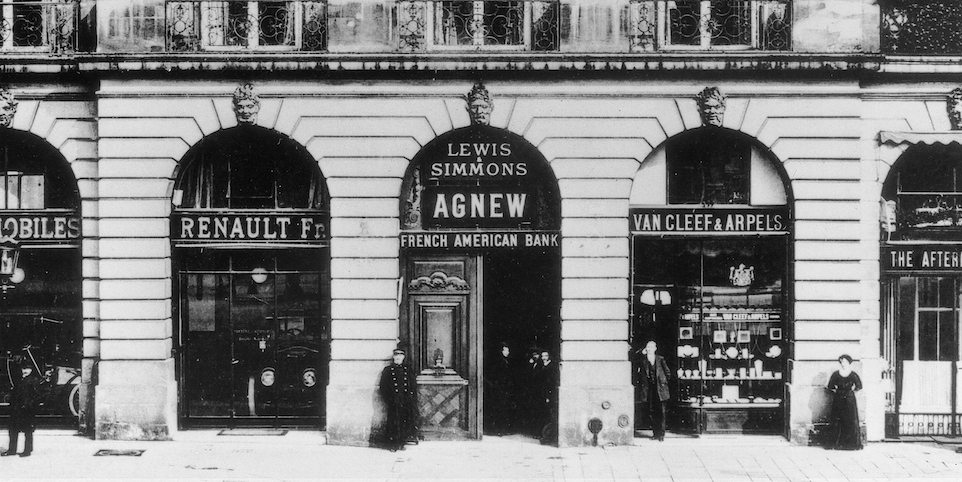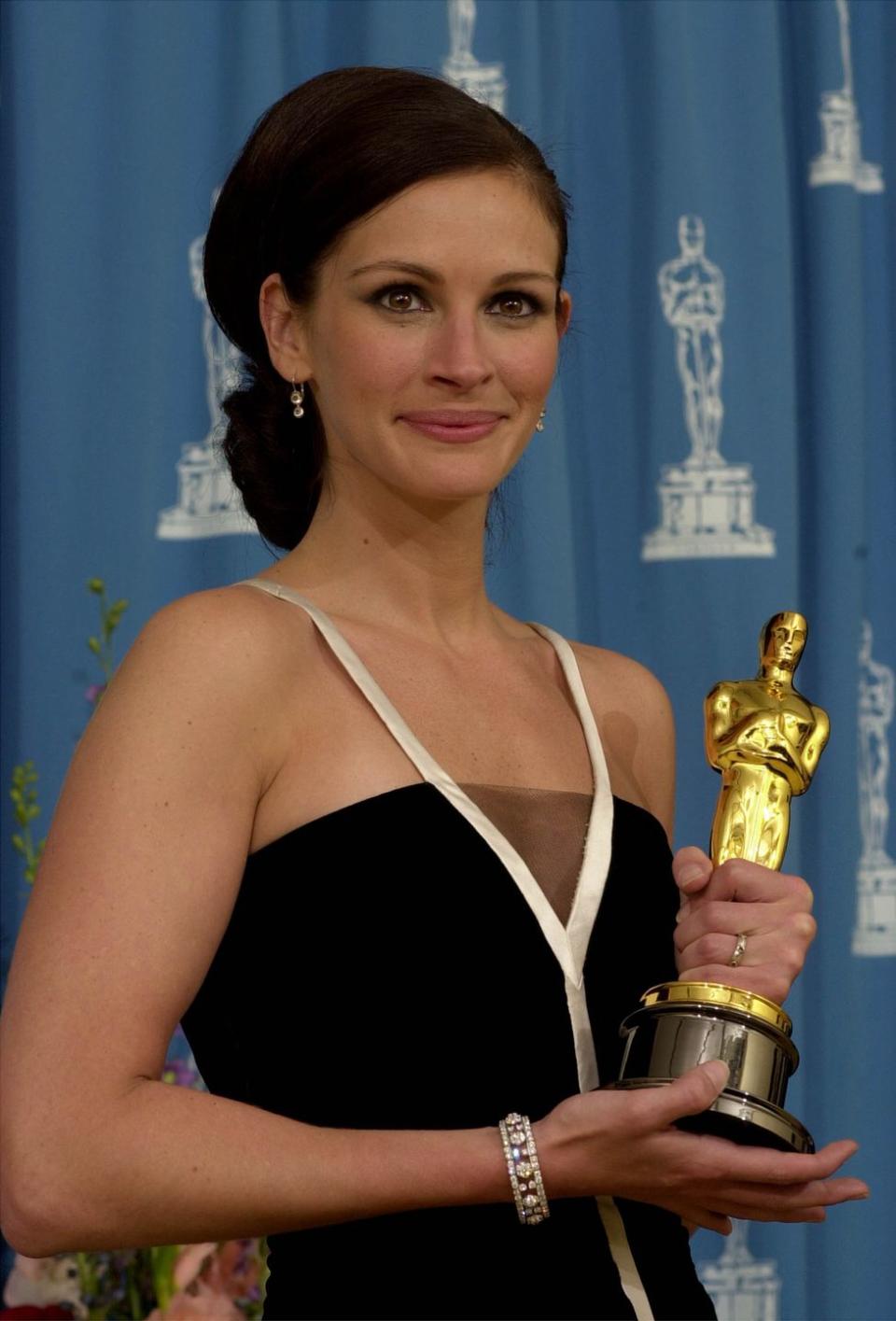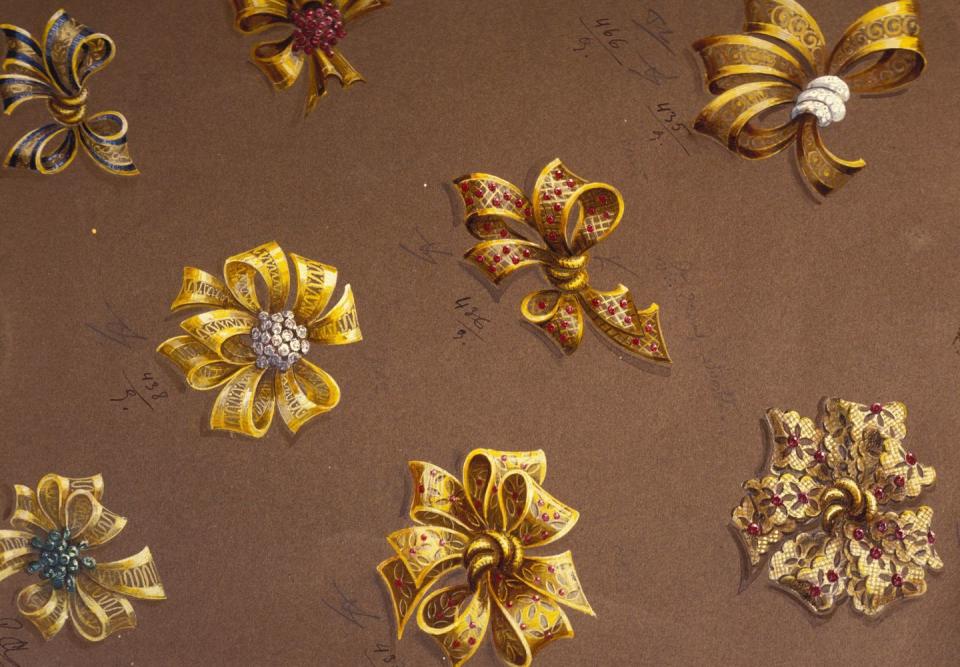Van Cleef & Arpels: A Vivid and Important History

"Hearst Magazines and Yahoo may earn commission or revenue on some items through the links below."
The beautiful works of art that are jewelry creations take weeks, months, and sometimes even years to come to fruition—much like a great romance. The venerable Van Cleef & Arpels was actually born out of a love story, and not just one between the jeweler and his work. Alfred Van Cleef, the son of a diamond dealer, and Estelle Arpels, the daughter of a precious gemstone dealer, married in 1895 in Paris, and subsequently, a formidable jewelry maison found its storied beginning.
Van Cleef & Arpels officially opened in 1906, thanks to Alfred Van Cleef and Charles Arpels, Estelle's brother, and were later joined by Estelle's two other brothers. The first boutique was located at 22 Place Vendôme in Paris, across the street from the Ritz Hotel. The Place Vendôme was and still is the epicenter of luxury goods in the city, and this location was no doubt strategic for the new jewelry house. Between 1910 and 1920, Van Cleef & Arpels also opened their doors in resort towns in France, like Nice, Deauville, Vichy, Lyon, and Cannes.

Van Cleef & Arpels was known, and still is today, for its exclusive clientele, dressing the likes of Grace Kelly, Elizabeth Taylor, the Duchess of Windsor, Marlene Dietrich, Barbara Hutton, and Princess Fawzia of Egypt, among others. In the 1920s, jewelry designs from the maison leaned more Art Deco, while some collections were inspired by different cultures or significant discoveries, like the historic opening of the tomb of King Tut in Egypt.

In 1926, Alfred Van Cleef's daughter Renée Puissant began presiding over the designs as creative director, along with designer René-Sim Lacaze. Together, they created now-iconic designs like the Cadenas watch and Ludo bracelet and techniques like the Mystery Set, where stones appear as though they are floating, thanks to its invisible setting, that are still in play. In 1930, Van Cleef & Arpels put out the first minaudière, supposedly inspired by Florence Jay Gould's (the famous opera singer) need for a chic case that could house her comb, lipstick, cigarettes, and compact.
Eventually, the firm opened boutiques overseas, namely in New York City and Palm Beach, at the beginning of the 1940s. Over the ensuing decades, more well-known collections have come to define Van Cleef & Arpels like the beautiful fairy and ballerina brooches inspired by the School of American Ballet—Louis Arpels was a close friend of George Balanchine– and the flamenco dancers of the Lower East Side in New York, in the 1940s. Its whimsical animal pins during this time came to define the Maison's designs as well.
The first 'Zip' necklace, a transformable piece based on a zipper that was a true design achievement, was created during the 1950s. Supposedly borne out of a conversation between Renée Puissant and Wallis Simpson, the Duchess of Windsor, the Alhambra collection was launched in 1968 and was inspired by the shape of the Moorish tiles on the Alhambra Castle. The collection has since come to symbolize good luck. During the 1970s, stones like turquoise, malachite, and coral were dominating the jewelry scene, and these also made their way into Van Cleef & Arpels's designs as well, along with launching their Rose de Noël collection.


Today, the firm continues to inspire the imagination and lead in innovative, collectible designs. The latest high jewelry collection, Sous Les Étoiles, pays homage to the sun, moon, stars, galaxies, and all the intricacies that make up our majestic solar system. Drawn from Camille Flammarion's influential text on astronomy, the collection mimics Halley's Comet, the Milky Way, and stars like the Alcor and Mizar to transport the wearer to heights unknown.

You Might Also Like

